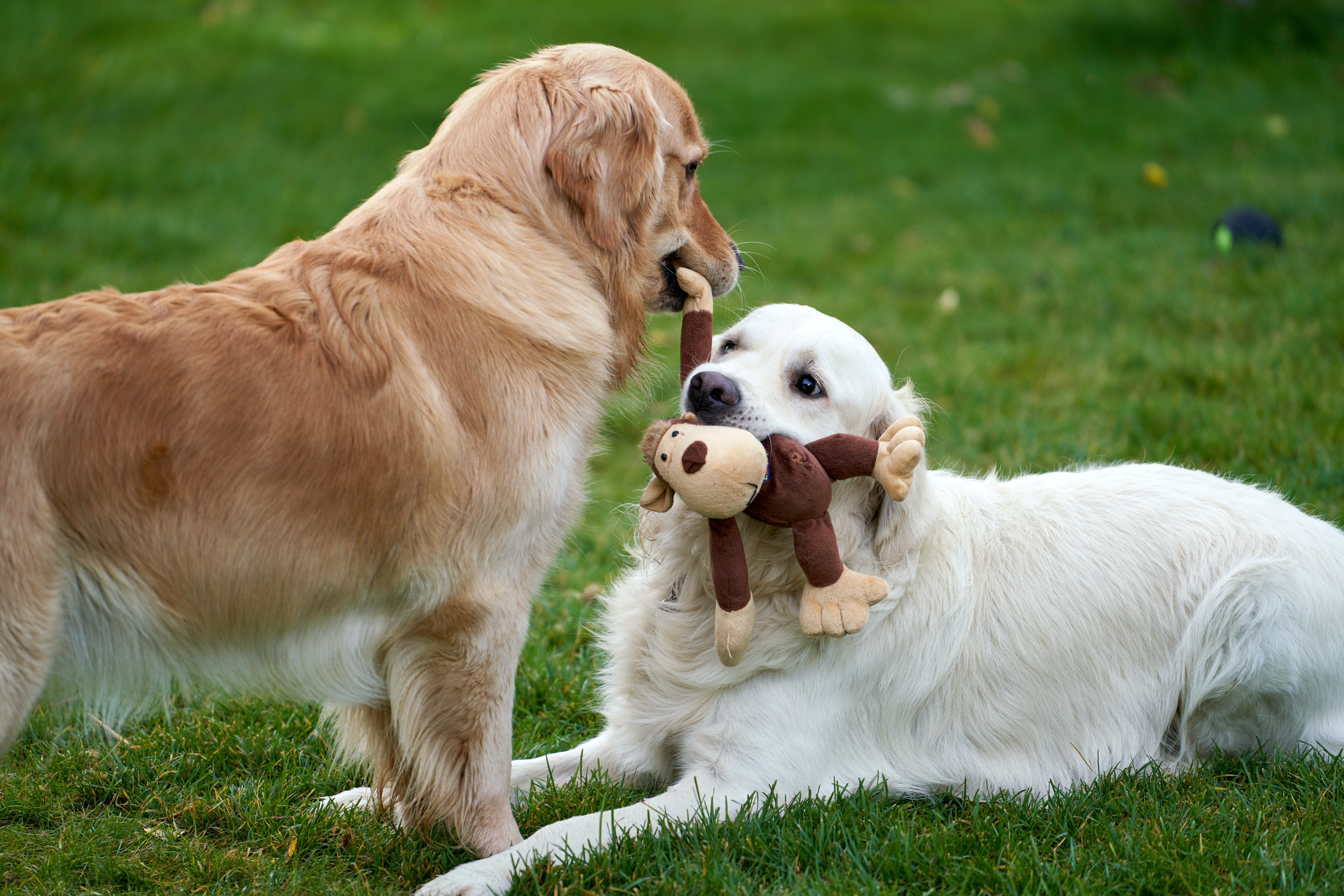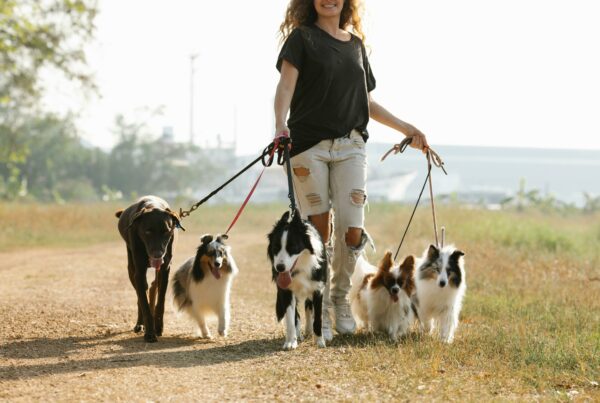Bringing a new dog into your home is an exciting experience for you, your family, and your current dog. However, it can also be a stressful time for your furry friend as they adjust to sharing their space and attention with a new canine companion. Training your dog to live with another dog requires a lot from you as a dog owner. It requires patience, consistency, and a willingness to adapt your training methods to suit your dog’s personality and temperament. Let’s delve deeper into the seven tips that can help you successfully train your dog to live with another dog.
Choosing the Right Match for Your Pet
Before choosing another dog for your household, take the time to consider all the options out there carefully. It is essential to pick a dog that will temperamentally get along with your first pup. As cute and cuddly as a dog may seem to you, it might not be a good fit for your first furry friend, and you may end up being in a world of hurt.
Think of your dog’s qualities and character. If your dog is very active and outgoing and likes to play—pair them up with a similar dog. On the other hand, if your dog is more on the quiet side and reserved, find a friend for them that will complement that instead of cause discomfort. If you are adopting a dog, ask the shelter as many questions as possible about the dog you are interested in. They will have some records on the temperament of the dog in question as well as how well-adjusted they are and if they are used to interacting with other dogs.
Taking the time to consider all the possible conflicts and benefits of pairing your dog with another dog will be highly beneficial in the long run. Choosing a dog that has not been properly socialized could create a very uncomfortable setting once you bring them home. The same goes for your first dog—they may not be the type to enjoy another dog’s company. Moving experts at Hansen Bros. Moving & Storage Seattle, WA, say that much like considering all the aspects of choosing a new home to move to, before you make the final decision, think long and hard about all the elements of bringing another dog into your home.
Start with a Neutral Meeting
Introducing two dogs to each other can be a delicate process, and taking the necessary precautions to ensure their first meeting goes smoothly is important—especially if one of the dogs has anxiety issues. Before introducing your dogs to each other, it is vital to set up a neutral meeting place. This will allow the dogs to get to know each other without any territorial issues arising.
Choose a location outside your home, such as a park or a friend’s backyard. Keep the dogs on leashes and allow them to approach each other slowly. Keep a close eye on their body language, and be ready to intervene if necessary. If the meeting goes well, don’t forget to praise and reward your dogs with treats.
Introduce Slowly and Supervise
Once your dogs have met in a neutral location, it’s time to introduce them inside your home. Keep your dogs on leashes and allow them to explore the space together, but keep a close eye on their interactions. If they seem tense or uncomfortable, separate them and try again later. Gradually increase the amount of time they spend together and supervise all interactions until you are confident that they can be trusted together.
For example, if your dog is used to having free reign of the living room, but your new dog seems to prefer that space, you may want to block off a smaller area of the room to give both dogs a place to hang out. This will also help prevent any territorial issues from arising when attempting to train your dog to live with another dog.
Give Each Dog Their Own Space
Just like humans, dogs need their own space to feel safe and secure. Make sure each dog has their own designated space, such as a crate or bed, where they can go to retreat if they feel overwhelmed or stressed. This will help prevent issues from arising and allow your dogs to feel comfortable in their new environment.
For instance, you can give your current dog their usual spot and a new bed for the new dog. Make sure each dog has enough space to retreat and feel safe.
Pro tip: Dogs can also become territorial over their resources, such as food, water, and toys. It is crucial to keep their resources separate to prevent any conflicts.
Train Separately
While training your dogs together is important, training them separately is also important. This will allow you to focus on each dog’s individual needs and ensure that they are both receiving the attention and training they need to succeed. Take the time to work on basic obedience commands, such as sit, stay, and come, with each dog separately.
If your current dog is trained to sit and stay, but your new dog is not, you’ll want to start with the basics for the new dog. Once both dogs have a good grasp of the basic commands, you can start to work on more advanced training together.
Establish a Routine
Dogs thrive on routine, so it’s crucial to establish a consistent schedule for your two dogs. This includes feeding, walking, and training schedules. By establishing a routine, your dogs will feel more comfortable and secure in their new environment, which can help prevent behavioral issues.
For example, try to feed your dogs at the same time every day and take them on walks at the same time. This will help them adjust to their new routine and feel more at ease.
Reward Good Behavior
Positive reinforcement is a powerful tool when it comes to training dogs. Whenever your dogs exhibit good behavior, such as playing nicely together or following a command, praise and reward them with treats or toys. This will help reinforce their good behavior and encourage them to continue to interact positively with each other in the future.
If you notice your dogs playing together without any signs of aggression, praise them and give them a treat. This will help reinforce their good behavior and encourage them to continue playing together in a positive way.
Be Patient
Training your dogs to live together is not a quick process, and it requires a great deal of patience and persistence. When trying to train your dog to live with another dog, the introduction process should be gradual, and it may take a few weeks for the dogs to adjust to each other. Start with short periods of supervised interactions and gradually increase the time. If you feel frustrated or overwhelmed, take a break and return to training later.
Remember that each dog has its own personality and temperament, and it may take some time for them to adjust to each other’s presence. Don’t get discouraged if your dogs don’t get along right away, and be prepared to make adjustments to your training methods if necessary. With time and effort, your dogs will become lifelong friends.
Also, if your dogs are not getting along, remaining calm is essential. Try separating them for a while and then reintroducing them later. It may take some time, but with patience and consistency, your dogs will eventually learn to coexist peacefully.
Pro tip: If you are faced with additional challenges, such as a long distance move with your pet, make sure you prepare your pup for this properly. Such a big change, in addition to meeting a new family member, will require some extra attention.
Bonus Tip: If You Are Getting a Puppy
If you have an adult dog and are getting a puppy, remember there might be some additional things to pay attention to. Puppies have lots of energy and can be quite a handful compared to adult dogs. This can result in your adult dog getting annoyed and losing patience. If your dog has a mild temperament, they will have their own ways of setting boundaries and essentially teaching the puppy what is acceptable. However, if that is not the case, leaving the two dogs alone might become unsafe. Always ensure to give your adult dog plenty of time away from the puppy and some extra quality time with you. In addition to this, ensure that the dogs have separate feeding bowls. No matter how cute it may seem to you for them to be fed together, individual bowls will keep food fights at bay and maintain peace.
Final Words on Ways to Train Your Dog to Live with Another Dog
When training your dog to live with another dog, you will need patience, consistency, and a willingness to adapt your training methods to suit your dog’s personality and temperament. When in doubt, just follow these seven tips and ensure your dogs coexist peacefully and happily in your home. Just give it time and effort, and your dogs will become best friends in no time and bring joy to your home for years to come.
https://www.pexels.com/photo/retriver-dogs-playing-with-plush-monkey-14084426/




